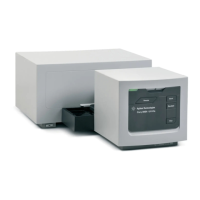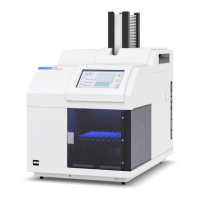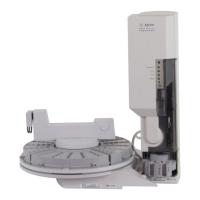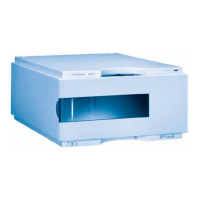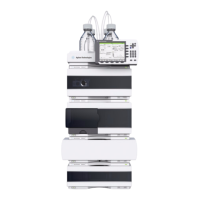Understanding Your Agilent ChemStation 81
Integration
4
Peak Recognition
In Figure Peak Width Calculation, the total area, A, is the sum of the areas a1,
a2, a3 and a4. Fs is the front slope at the inflection point, Rs is the rear slope
at the inflection point. If either inflection point is not found, the peak width is
defined as:
Width = Adjusted area / Adjusted height
The peak width setting controls the ability of the integrator to distinguish
peaks from baseline noise. To obtain good performance, the peak width must
be set close to the width of the actual chromatographic/electropherographic
peaks.
There are three ways the peak width is changed:
• before the run, you can specify the initial peak width,
• during the run, the integrator automatically updates the peak width as
necessary to maintain a good match with the peak recognition filters,
• during the run, you can reset or modify the peak width using a
time-programmed event.
For peak width definitions used by System Suitably calculations please see
“Peak Width” on page 80.
Peak Recognition Filters
The integrator has three peak recognition filters that it can use to recognize
peaks by detecting changes in the slope and curvature within a set of
contiguous data points. These filters contain the first derivative (to measure
slope) and the second derivative (to measure curvature) of the data points
being examined by the integrator. The recognition filters are:
Filter 1 Slope (curvature) of two (three) contiguous data points
Filter 2 Slope of four contiguous data points and curvature of three non-contiguous
data points
Filter 3 Slope of eight contiguous data points and curvature of three non-contiguous
data points
The actual filter used is determined by the peak width setting. For example, at
the start of an analysis, Filter 1 may be used. If the peak width increases
during the analysis, the filter is changed first to Filter 2 and then to Filter 3.

